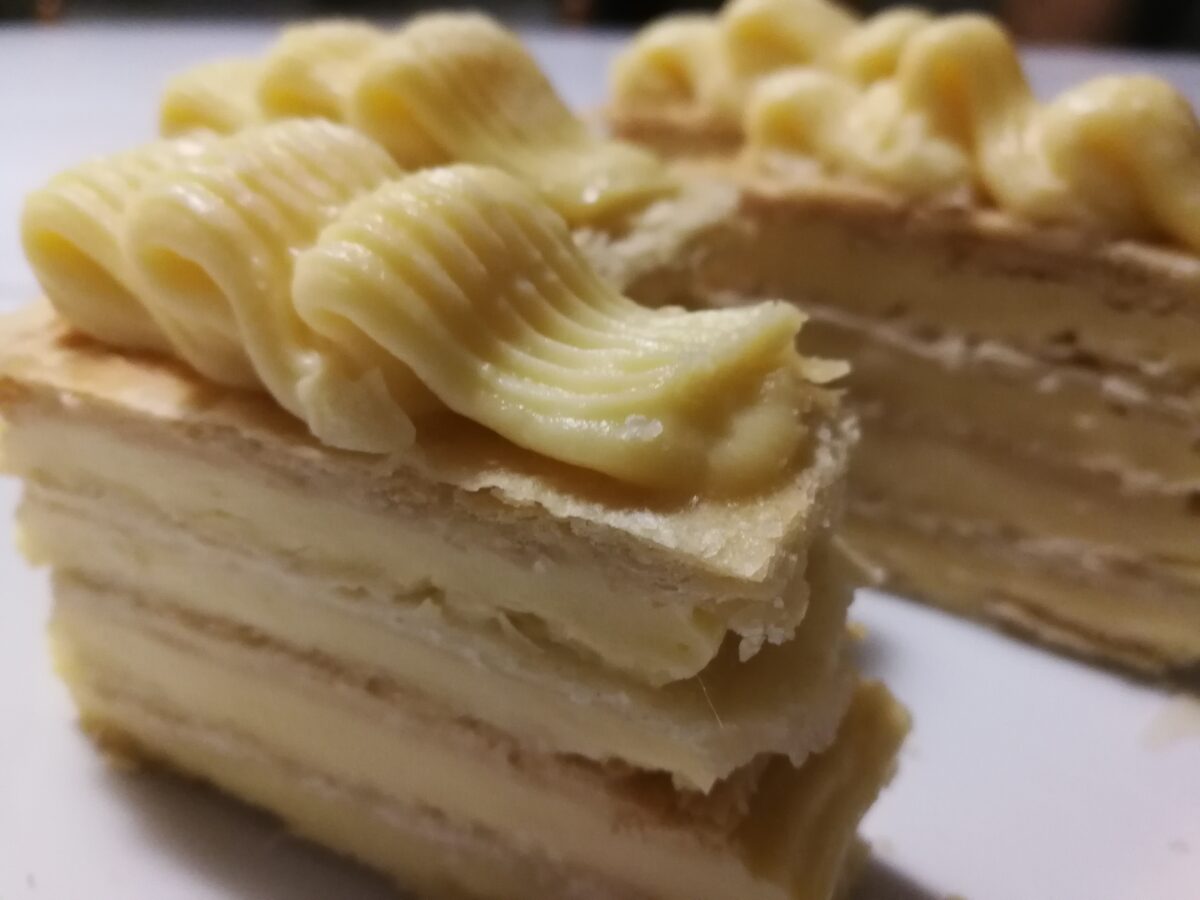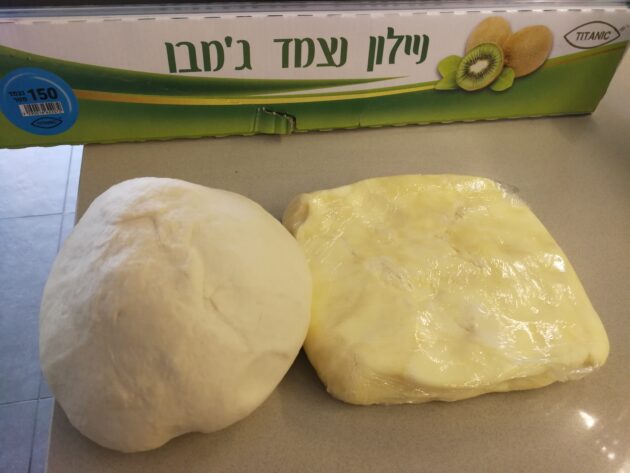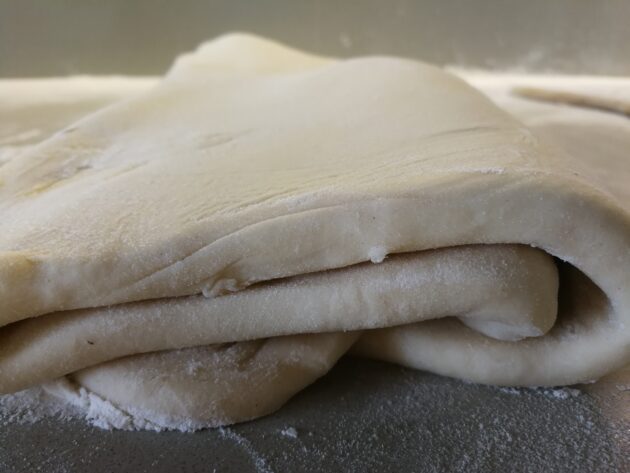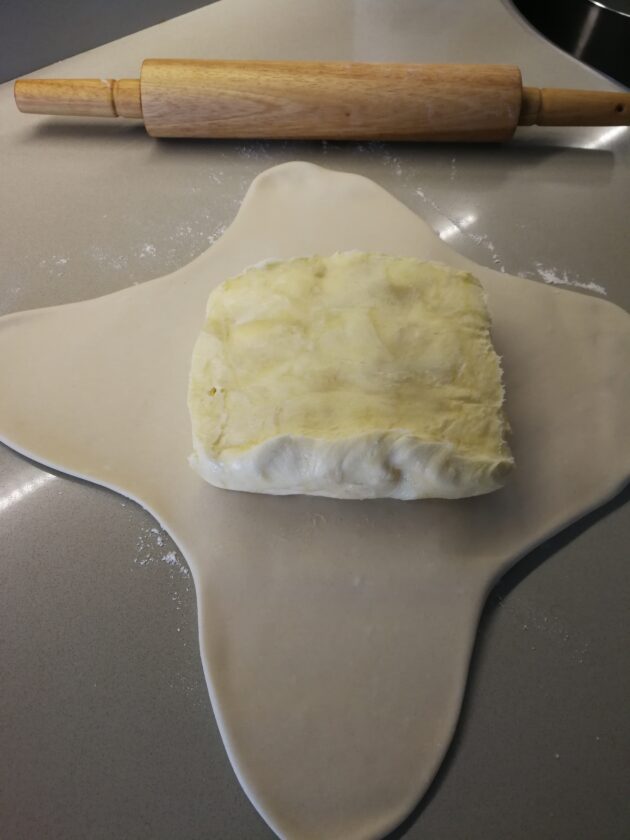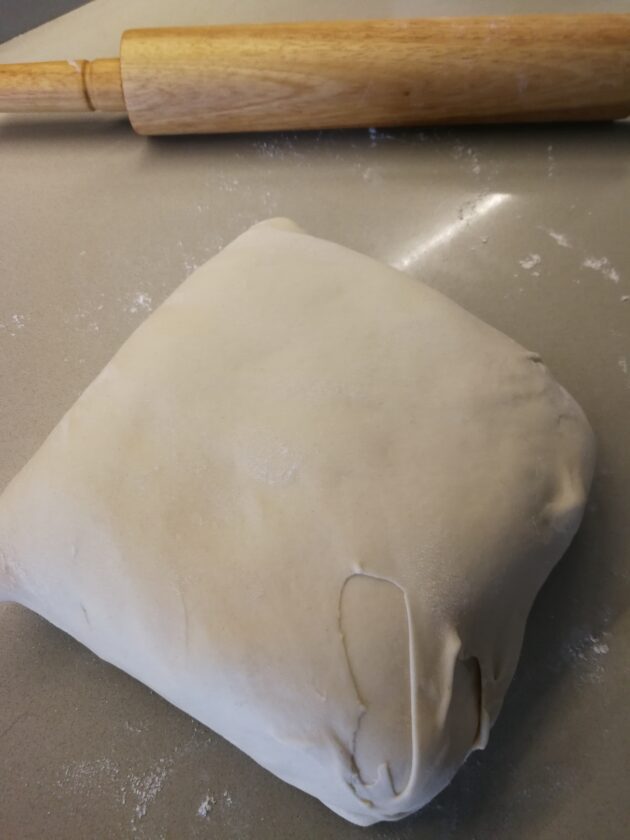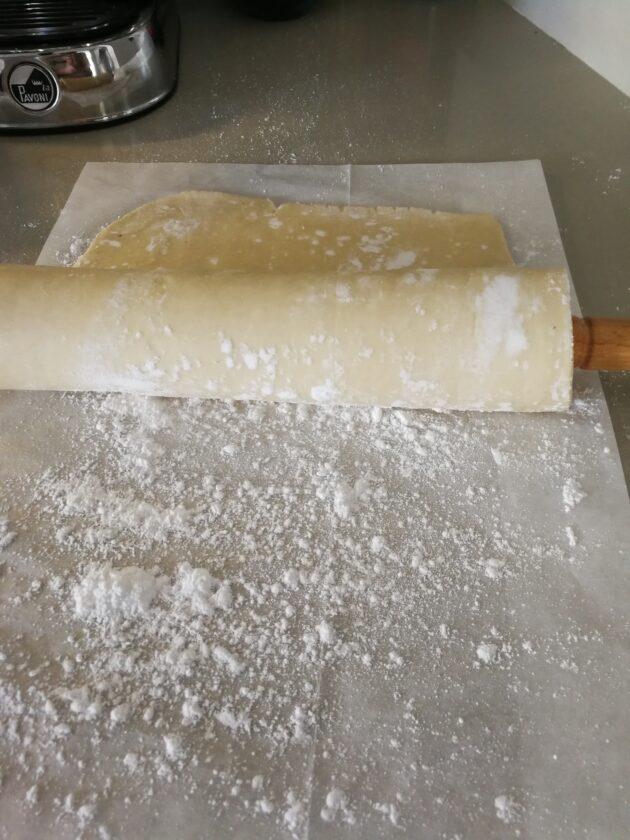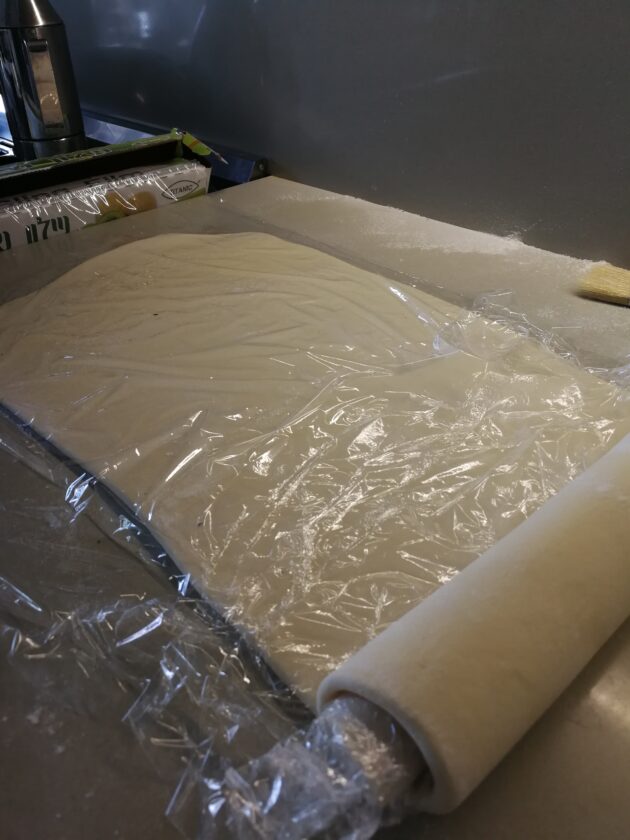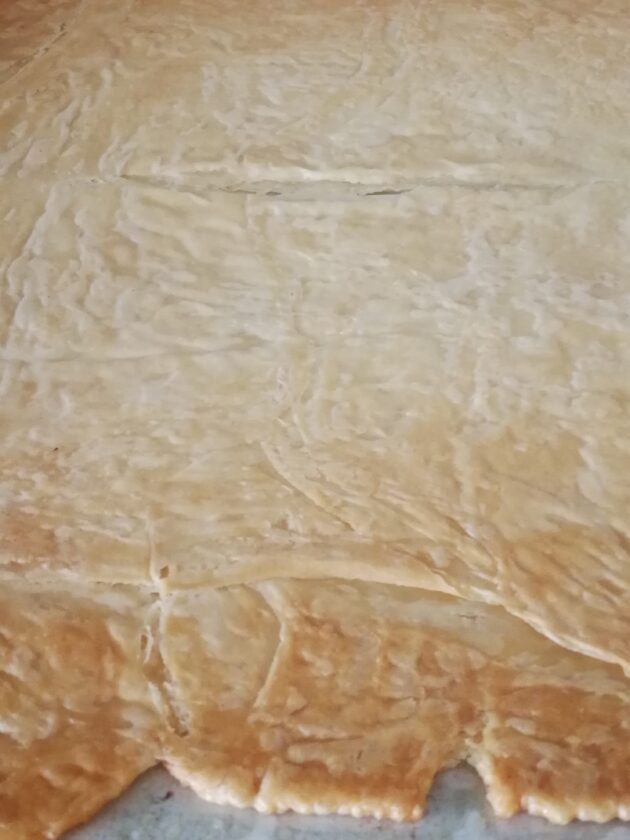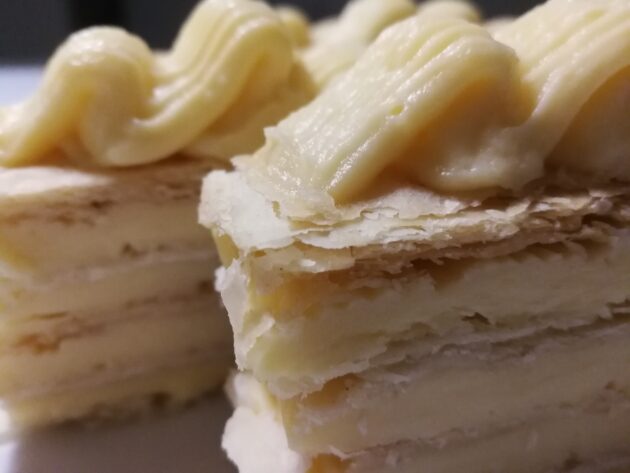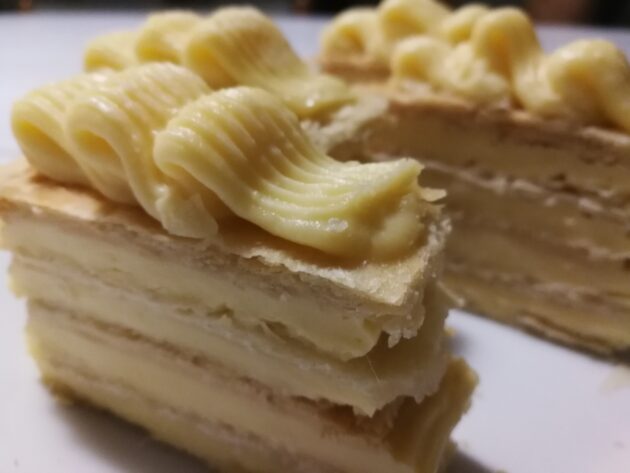Part 1. Napoleon Cake/Vanilla Slice
There are many types of traditional pastry, shortcrust pastry, choux pastry, but none of them as versatile and decadent as mille feuille (thousand sheets/pages), better known in the English speaking kitchen as puff pastry. Appearing in gastronomic literature in France in the 1600s, it began to become popular amongst those that could afford it while everyone else ate dirt, hence the discontent amongst the eaters of dirt, which resulted in the well known French Revolution, the invention of the guillotine – not very popular amongst French Royalty and ‘Society’ – and the rest is history.
Two of the most well known dishes created using mille feuille have their origins in the Napoleonic wars. Napoleon’s namesake the Napoleon cake (vanilla slice) became popular during this period, and his nemesis the Duke of Wellington who vanquished the same Napoleon at Waterloo had the magnificent dish beef Wellington fashioned and named in his honour. Perhaps mille feuille was also brought to Russia by Napoleon in his failed invasion and attempt on Moscow, as the Russian/French dish coulibiac uses the French pastry to serve up a delicate treat usually made with salmon, rice, mushrooms and hard boiled eggs.
Puff pastry is popular the world over and has many uses, sweet and savoury. As mentioned above, some of the world’s finest dishes are made from puff pastry. Along with these, there are a number of minor dishes such as petit four, vol au vent (who remembers these?), Sephardi boureka, the tops of the very best meat pies and last but not least the wet dream of every child’s birthday party back in the day, the mighty sausage roll.
Puff pastry seems tricky to make as it requires a few more steps than most other pastry dough. While appearing a little daunting at first, with a little self-confidence, good instruction and care it proves eminently manageable.
The whole secret to the richness of puff pastry is the burying of a huge amount of butter within the dough and then repeatedly folding it to create the layering effect without breaking the pages in the dough. If you break the pages it could allow the butter to escape during baking which in turn would defeat the whole decadent reason for making it in the first place.
Now a dietitian would probably counsel against the evils of consuming mille feuille, pointing out that the flour:butter ratio being in favour of the butter is both unhealthy and unwise to consume, but as we all know, anything really tasty or worthwhile has to be bad for you.
I have made mille feuille recipes at 5 star hotels where 1.250 kg of butter goes into 1.00 kg of flour. Pure heaven, totally decadent but also not really necessary. A respectably rich mille feuille can be produced with a lesser ratio of butter to flour and that’s the recipe I will use here in my post.
I will be doing two posts using mille feuille, one savoury and the other a dessert.
Mille Feuille (Puff Pastry): A Reasonable Version
Of course you can buy puff pastry at your supermarket, so if you aren’t adventurous and you are less keen for risk you can buy the basic mille feuille complete, but you still have to follow baking instructions.
Ingredients:
- White flour x 650 gram
- Water x 300 gram
- Canola oil x 50 gram
- Salt x 5 gram
- Butter x 400 gram
Method:
Place the butter and 50 grams of flour into a bowl and with gloved hands mix well until the flour is evenly absorbed into the butter. Form a small square/rectangle shape with the butter a couple of centimetres thick, wrap in Glad Wrap and set aside.
Put the remaining 600 grams flour and the salt in mixer, slowly add the combined water and oil and mix for about seven minutes until smooth. Set aside to rest for ½ hour (super important as it will be impossible to work until the gluten has relaxed again).
Take the ball of dough and roll four ears from the dough, place the butter in the centre of the dough and gently pull/stretch the ears one after another encasing the butter completely.
Now we are going to do a 4 x 3 x 4 x 3 fold which should leave close to 150 separate pages or leaves of dough within the mix. The original French recipe had another four folds in addition to the four of this recipe which would have provided for well over a thousand leaves of pastry, but no need to overdo it.
1/. For the first fold we roll out the dough, ensuring it is well floured, to a length of some 40 cm. We fold back both ends to the centre. With a small brush, dust off all excess flour before and after you fold. Then fold one half onto the other, giving four layers. Wrap in Glad Wrap, place in the fridge and rest for ½ hour.
2/. After removing from fridge the second fold is of three. Roll out the dough ensuring there is plenty of flour messing up everything. Again using a brush dust all flour off and fold the dough to one third and the other end over it for three folds, wrap and return to fridge for ½ hour.
3/. & 4/. The third fold is again the four layers, do as in 1/ above. The fourth is again three layers. Return the mix, wrapped in Glad Wrap, to the fridge each time for 30 minutes to allow the gluten to relax.
After the last fold and its subsequent 30 minute wait, roll out the dough to 0.5 cm thickness ensuring all sides are well dusted with flour, then take the Glad wrap and pull out over the dough until the end. Roll up the dough with the Glad Wrap acting as a separator. The dough must rest now overnight at least 12 hours in the fridge; or if you intend to use it at a later date you can freeze and defrost in the fridge as needed. VOILÀ as they say.
Napoleon Cake / Vanilla Slice
Aside from the mille feuille, the other ingredient to complete the Napoleon cake is the creme patissiere or vanilla flavoured pastry cream.
Creme Patissiere/ Pastry Cream:
Again, who knows, maybe you can buy pastry cream pre-made, but it’s not that hard to make so maybe give it a go.
Ingredients:
- Milk x 300 ml
- Vanilla essence x 5 ml
- Egg yolks x 120 gram (6 yolks)
- White sugar
- Cornflour (starch) x 50 gram
- Butter x 50 gram
Method:
Put milk and vanilla essence in saucepan, heat until it simmers, but don’t boil. In a bowl using a whisk mix the egg yolks, sugar and cornflour until they become one. Tip 20 percent of the hot milk into the egg mixture a bit at a time and mix well with the whisk.
Using a silicone spatula pour the mixture back into the saucepan through a sieve. Stir slowly ensuring it doesn’t burn and the mixture will start to thicken quite quickly.
The mixture will start to erupt like a bubbling hot mud pool in Rotorua. Keep stirring until you can feel it thicken and when you lift the whisk from the mixture the batter remains firm on the whisk and doesn’t drip back.
Remove from the heat, add the butter, mix it in and then create a skin using Glad wrap. Cover with Glad Wrap ensuring the Glad Wrap is one with the mixture. This prevents a hard skin from forming which would result in the loss of a significant amount of the mixture. Set aside to cool/place in the fridge.
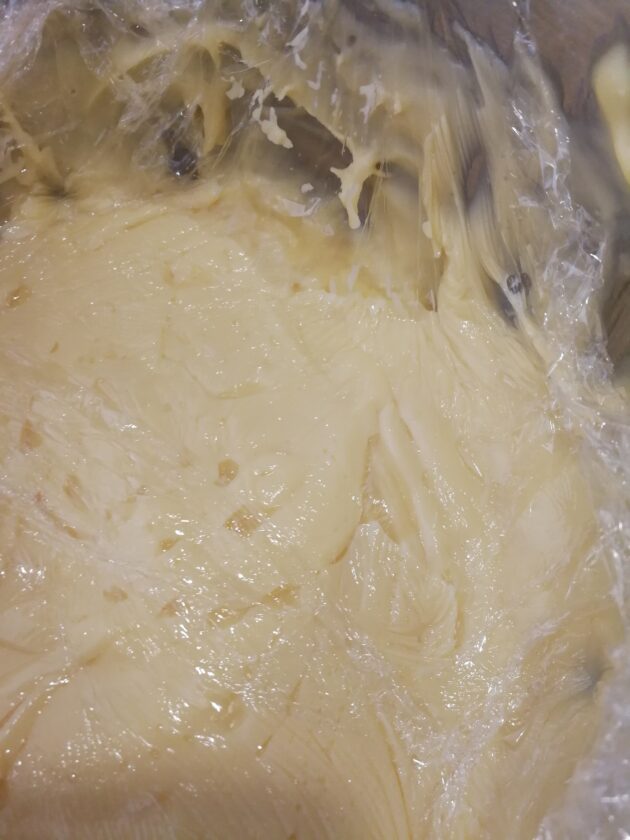
Then we unroll and cut off about 30 centimetres in length from the rolled up mille feuille dough from the fridge and place on a baking sheet. Instead of flour to prevent the dough sticking while rolling it out we use confectioner’s sugar or sugar powder, sprinkling liberally both underneath and on top of the dough.
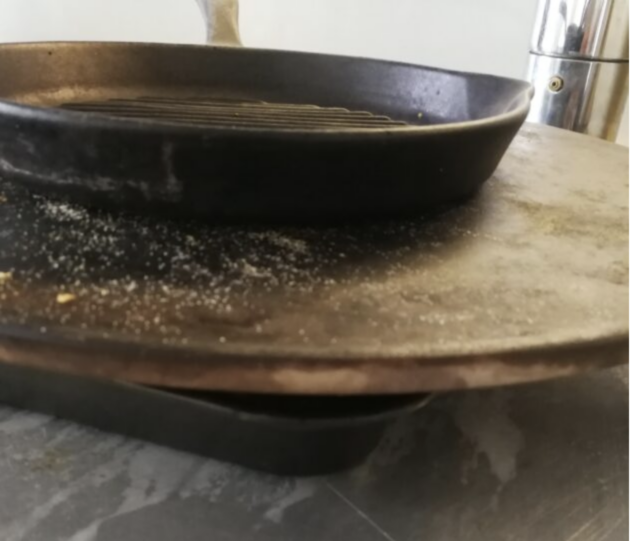
We roll the dough out until it is no more than 3-4 millimetres thick, place a piece of baking sheet on top, place on the baking paper a baking tray and place another baking tray on top of that. We add more weight to it in the form of pans or griddles; this ensures the mille feuille stays thin and crisp. If not weighted it will puff up and not be usable for Napoleon cake.
Put into the oven preheated to 210°C and bake for around 30-35 minutes or until browned; turn the tray around after 20 minutes to ensure both sides are browned.
Remove to cool completely, then using a long sharp knife with a serrated edge cut equal strips to the measurements of an English cake baking form, about 10 cm wide. Five strips will be more than enough.
Line an English cake baking form with Glad Wrap, ensuring you have enough on either side to completely cover the cake when you have finished constructing it.
Once the the pastry cream has cooled, using a piping bag with nozzle, pipe a layer of pastry cream onto the first layer of puff pastry. Place the next layer of baked puff pastry on the piped pastry cream, gently pushing down, and repeat for however many layers you want. I usually do three layers of pastry cream (5 layers of mille feuille) with a decorative layer on top. Place in fridge and cut when stable, or I like to eat it as a frozen delight and freeze and cut as I need it.
Next week: beef Wellington with plain white rice and steamed asparagus tossed in olive oil and lemon juice.
If you enjoyed this recipe why not share it with your friends via social media or e-mail? If you want a copy of your own select the print option at the top of the page.

